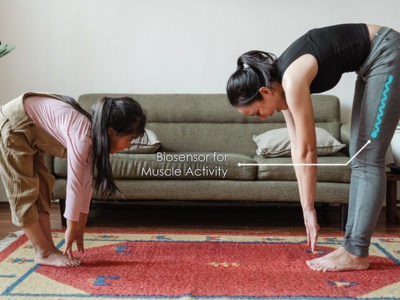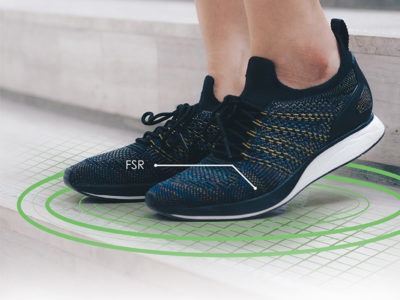What is home health?
Home health is healthcare that can occur from the privacy and safety of your own home. In this newfound norm of staying home, many people are struggling to get the adequate healthcare that they need. Throughout the COVID-19 pandemic, in-person doctor visits are becoming harder with the regulations and guidelines put into place. Home healthcare is not only an option for medical patients, but also for fitness enthusiasts who are interested in monitoring their body and muscle function. Let’s take a deeper dive into home healthcare and some new technology that can be used.
Medical healthcare at home:
Your health is, and should be, your number one priority. However, with COVID-19 still a concern, getting in to see your doctor can be extremely difficult. Virtual visits have become the new norm for many patients today, as they feel that their health may be compromised stepping into a doctor’s office or hospital setting. Thankfully, technology can keep the healthcare industry moving from the comfort of your home.

Virtual Doctor’s Visits:
Virtual visits can take place via phone call, or a virtual platform such as Zoom. Doctors can prescribe medications for the symptoms you are experiencing and help you to gain a better understanding of what exactly may be the cause behind them.
The same can be said with regard to mental health. Many therapy sessions can be attended via Zoom or another virtual platform. This is primarily to ensure the health and safety of both the therapist and the patient. However, these virtual meetings can be just as successful, without having to drive or take public transportation to a medical facility.
Physical Therapy at Home:
Many people who experience an injury of some sort may find themselves needing to complete physical therapy to help with their recovery. Physical therapists can consult with their patients at scheduled times via a virtual call and can show them the exact exercises that need to be done. They can walk them through the motions step by step, just as they would in person. Electrical stimulation or e-stim can also be utilized in a remote setting, as we will discuss later.
Printed Electronics for Remote Health:
Through the use of printed electronics, many important health vitals are able to be monitored from a remote location. Examples are as follows:
1. Heart Rate
2. Respiratory Rate
3. Brain Activity
4. Temperature
5. Hydration Levels
Biosensors
Printed electronic technology can seem relatively complicated, yet it is actually very simple for the end-user. Printed biosensors can be incorporated into garments, such as articles of clothing or headbands, and the sensors would provide the patient with readings on their vitals. The readings would then be relayed directly to a synced Bluetooth device, such as an app on their smartphone. The readings could occur as frequently/infrequently as the patient specifies, and it could potentially alert them of any health concerns.
Take for instance a heart rate monitor, the printed biosensors would be able to notice an abnormality in heart rate before the patient felt any of the symptoms. This means they could recognize an oncoming heart attack in a patient and provide them fair warning to seek help, prior to them even realizing their health is in jeopardy or feeling any of the symptoms.
Wound Recovery
Home healthcare, however, is not only your body’s health and vitals. It could also be wound or muscle recovery. But did you know that printed electronic technology can help with wound recovery time? Flexible printed heaters are just as they sound: flexible heaters that are screen printed. Just like a biosensor, you can incorporate printed heaters into articles of clothing. However, you can apply them to just about any surface or fabric. Printed heaters could be incorporated into wound care, such as a large bandage, and the heat given off helps to speed up wound recovery.
Home health for fitness enthusiasts:
Fitness enthusiasts around the world are struggling right now. They are struggling with the fact that many of their gyms are closed, or the fact that their gyms may not be a safe space for them as they once were. This has resulted in many athletes or workout enthusiasts having to complete at-home workouts.
Imagine now, that you can monitor not only your health vitals but your muscle activity throughout your workout. This is not a made-up fantasy, but rather a new reality.
Biometric sensors
Printed electronics offer a wide variety of different functions. For instance, biosensors are the printed electronic technology that can monitor health vitals, as discussed previously. This means that athletes today could wear compression garments during their workout, and the sensors incorporated into them could provide them with updates on their health data, such as their active and resting heart rate, how heavy they are breathing, or whether they may be experiencing early-on dehydration.

But there are also biosensors that are capable of monitoring muscle activity. By adding biosensors into your compression garment, it could monitor how your body’s muscles are working throughout the workout. Examples would be as follows:
1. Muscle Activity
2. Muscle Symmetry
3. Muscle Fatigue
4. Player Load
Biosensors can provide you with real-time data on your muscles and how they are functioning. They can tell you when you’re overworking one muscle, or whether your muscles are working equally.

E-STIM and TENS
Another unique biosensor in today’s market are e-STIM and TENS biosensors. Rather than receive information from the body that is then relayed to the end-user, these biosensors do the complete opposite. They actually send off stimulation to the body through electrical muscle stimulation or e-STIM for short. E-STIM and TENS are electrical treatments that help with muscle recovery time, which could be extremely beneficial to the end-user.
Force Sensing Resistors
Another form of printed electronics is a Force Sensing Resistor, or FSR. FSRs are exactly what they say, a sensor that can measure force. FSRs can be used in a wide variety of applications, but are commonly used in podiatry, or foot care. FSR sensors can be added to the bottoms of your shoes and can measure the pressure points your body is applying the most force to. This is drastically important for fitness enthusiasts, as it helps them to know if they are unequally distributing pressure on their feet. It also provides them real-time data to their smartphone, via Bluetooth, so that they can make any of the proper fixes or adjustments needed based on what the data reads.

Meet the Author: Jaclyn King
Jaclyn was previously the Digital Marketing Specialist on the BTI Team.